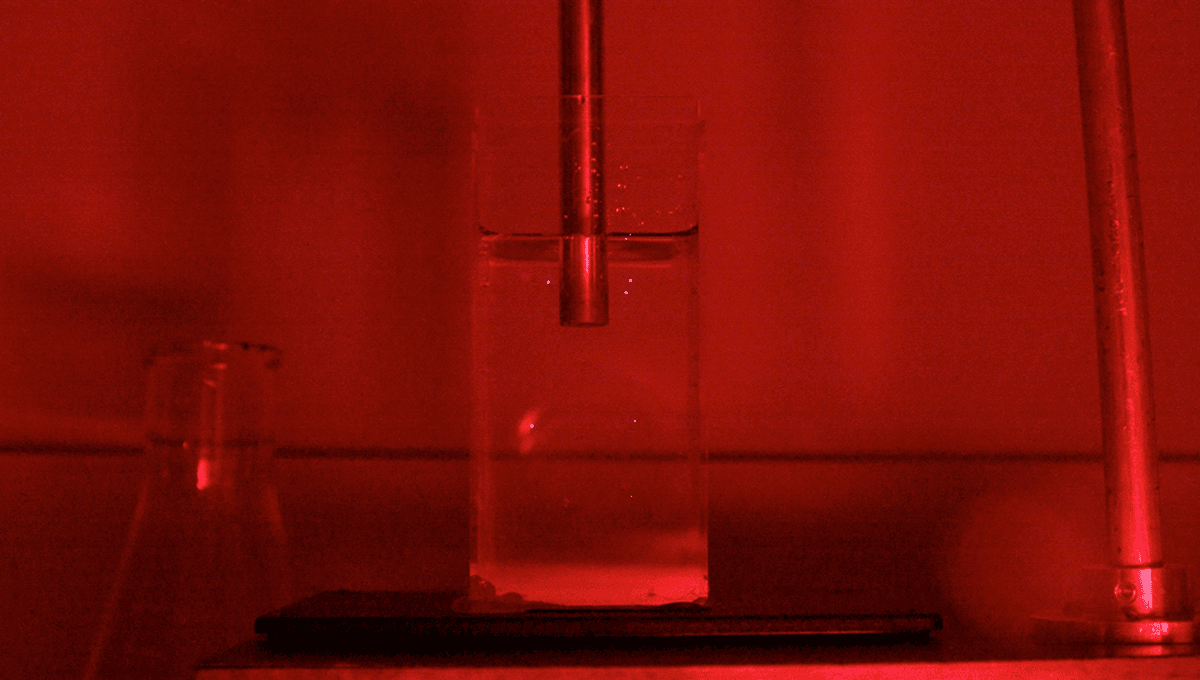
There are plenty of physics problems out there that are unresolved, from the Hubble tension to the black hole information. But one particularly cool and far more demonstrable mystery revolves around something you probably see just about every day of your life; bubbles.
In 1934, scientists at the University of Cologne were studying sonar when they noticed something really strange. In a water bath pounded with ultrasonic waves, they saw a chaotic cloud of flashing cavitation bubbles. That was pretty weird but for a time there was no real way of studying the phenomenon, until, in 1991, researchers were able to trap a bubble in the center of a flask and really take a good look at it.
“With the room lights dimmed, a greenish luminous spot the size of a pinpoint could be seen with the unaided eye, near the bubble’s position in the liquid,” the team wrote in their paper. “The luminous spot was then located at the bubble’s geometric center when observed through a microscope.”
Seriously, get a good look at it. How weird is that?
This study showed, and further studies confirmed, that light can be emitted even when the bubble does not collapse entirely, but emits light every time it is compressed by the sound field. We have since learned that we were beaten to discovering sonoluminescence by the mantis shrimp, which can move its claws together so quickly it causes a cavitation bubble followed by the bubble emitting light.
Physicists have attempted to explain the phenomenon, and have come up with some pretty good hypotheses, but to date there is no explanation that is widely accepted as the correct one. What we do know, is that the bubbles themselves get pretty hot at up to 25,000 Kelvin (24,726°C, or 44,540°F). If that doesn’t convince you of the awesome power of bubbles, you should know that cavitation bubbles are notoriously damaging to the propellor blades of ships, exerting forces in excess of 7 kilograms per square centimeter upon them.
The heat produced by bubbles is presumed to be a factor in the production of light, with some modeling it as the result of black body radiation. It has also been suggested that inert gas becomes ionized under these intense collapse conditions, and the light is bremsstrahlung radiation produced when an atom collides with an ionized particle and emits light. However, not all are convinced that these ideas match the data.
Other explanations include radiation produced by quantum tunneling, to nuclear fusion taking place under the high temperatures, though this avenue is unlikely to be correct. There are those who argue that the effect is quantum in nature.
“We have three kinds of lights in the world. Either they are laser, and you have to spend a lot of time and energy to create a laser, or they are thermal, which is the light that usually we get from the Sun or from a tungsten lamp or a hydrogen lamp, et cetera, or they are quantum,” senior author of one study, Ebrahim Karimi at the University of Ottawa, Canada, told IFLScience.
Observing bubbles in a clever setup, this team believed to have found evidence that sonoluminescence is a quantum effect, with the photons emitted being entangled with one another in pairs.
“We observed that photons are coming in a specific statistic. And this specific statistic is known as sub-Poissonian,” Karimi added. “And this is a confirmation that this phenomenon is quantum in nature, purely quantum, and has no classical analog.”
This would be useful, as producing entangled particles through bubble formation could be cheaper and more accessible than other methods. However, it still isn’t clear which explanation is correct, meaning scientists out there will have to spend a little more time playing with bubbles and figuring out what’s going on before we can use them in quantum experiments.
Source Link: When Underwater Bubbles Collapse They Can Generate Light, And We Don't Really Know Why